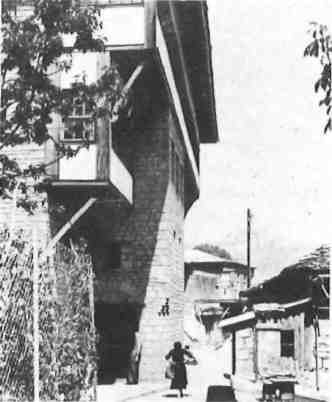
Around the city walls the silversmiths still practice their traditional craft and inside the castle a mosque reminds the visitor of the strong ties linking the fate of Ioannina with Ali Pasha. The mosque, where Ali and his Muslim friends worshipped, is now a museum containing many items, including weapons, clothing and silverware, connected with Ali Pasha and his period as the “ruler” of this area.
Looking across the lake I was fascinated by the mountains, both their colouring and their height. For now I was in that area the Greeks call Epirus and from here to Albania in the north and to the east — to the incredible rock formations of Meteora — it’s mountains all the way.
Many visitors to Greece go away with the impression that the mountains are just a backdrop to the inviting blue sea and they don’t get up into the passes and meet the people who live there.
In the area between Ioannina and Meteora you’ll find the true mountain people and, if you’re adventurous enough, a rewarding experience in the Metsovon Pass.
Metsovo, at 1,200 metres above sea-level, is one of the most attractive, neat and tidy settlements in Greece. It could be a town or a village, according to your standards, and, like all mountain people, the locals have built their houses and other buildings in “layers” down the sides of the steep slopes. They have used a great deal of stone as well as wood and it’s this combination, I imagine, that reminds many visitors of Austria and Switzerland. But there the similarity ends for these people wear their local costume day and night and, of course, their language is different.
There is an extremely interesting church in the centre of the town. A small guide book, written by a member of the famous Averoff family, tells us that there has been a church on this site for centuries and that one inscription, on a stone near the entrance, records the fact that the church was “restored in 1511”. The altar screen is a typical example of the incredibly fine woodcarving for which the craftsmen of this area became famous throughout the Balkans.
As well as ikons of the “Meteora school”, there are also several from Russia — a reminder that many people from Metsovon made their fortunes in Moscow. Chalices and crosses, worked in silver, have also been donated by Metsovites in Moscow, mainly during the years immediately following Greek independence.
Another building the visitor must see is the old mansion of Michael Tossitsas. This house, in stone and wood, is beautifully preserved and a walk around its many rooms — starting with the stable inside the front door — gives an insight into the life of these people. The house is a museum, well organised with a great deal of thought and plenty of imagination, containing an amazing collection of furniture, wood-carving, hand-woven materials, metal-work and just about everything that played a part in their daily lives. You can also find out how they managed to keep warm during the long mountain winters!
One more thing before I climb down from the mountains — which I strongly recommend for an Easter visit — Metsovo is fast becoming a winter holiday centre. A ski-lift operates from just above the town itself .and can carry 50 people at a time another thousand metres above the centre of Metsovo.
The view from the lift, especially coming down, is worth the “jump” onto the moving seat. Nowhere else in Greece will you see such a view. Don’t look down at the earth moving below your feet — look towards the rooftops of Metsovo and the sweeping mountains all around you. Breathe the clear and sparkling air as you enjoy a bird’s eyrie life!







